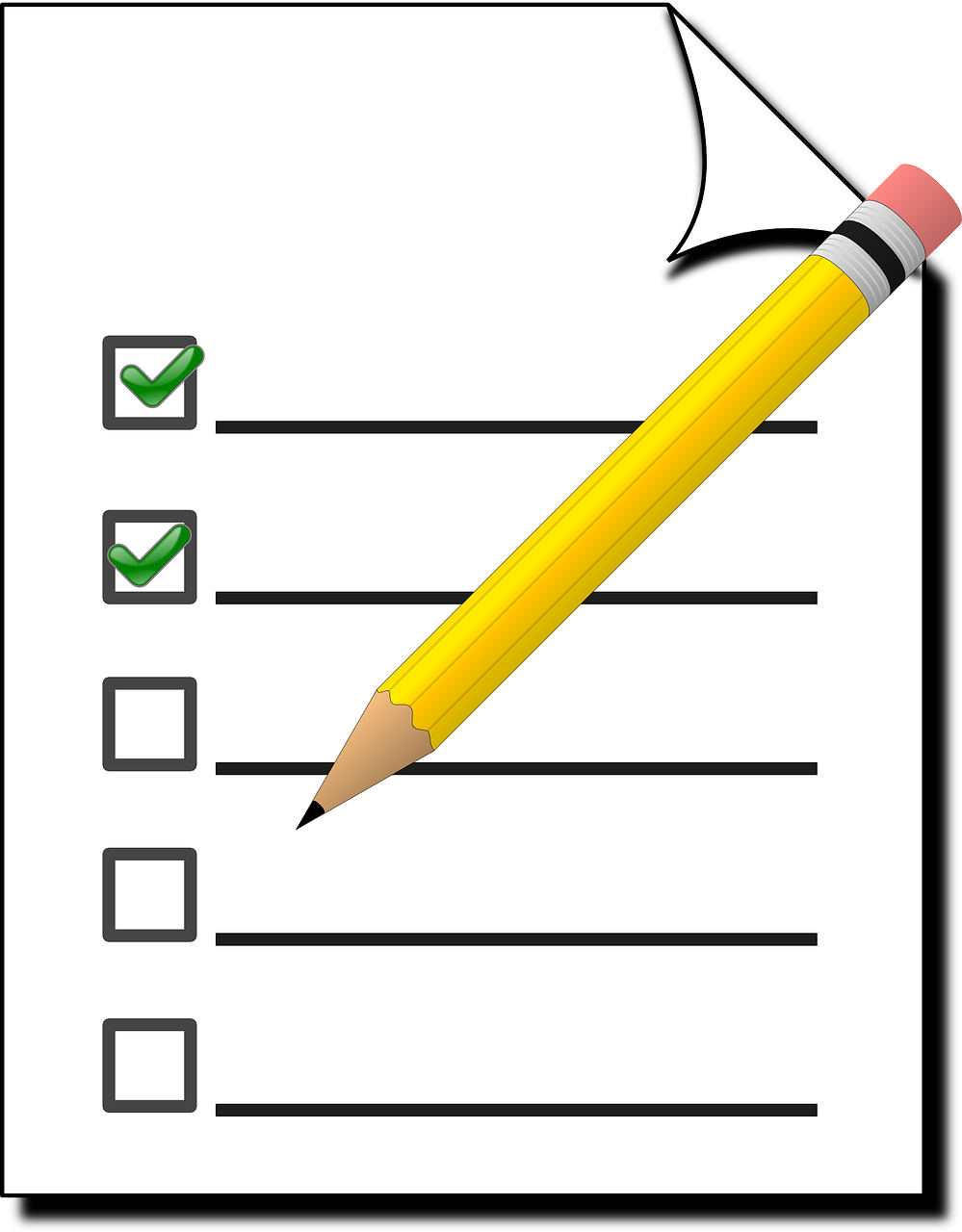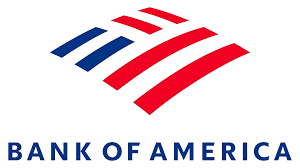The Most Effective SAFe Scrum Master Certification Exam Preparation
The ScholarAcad Advantage
1. Module: Introduction of Scrum in SAFe
- Concepts of Basic Agile Development
- Basics of Scrum
- Establish Agile Team in SAFe Enterprises
2. Module: Scrum Master Role Characterization
- Scrum Master Responsibilities
- Effective Scrum Master Characteristics
- High-performing Teams
- Use Powerful Questions to Coach Agile Team
- Team Events
- Cross Team Collaboration
- Resolve Conflicts in Teams
3. Module: Experience PI Planning
- Basics of PI Planning
- Drafting PI Planning
- Business Value and Final Plans
- PI Objectives and Final Plan Review
- Facilitate PI Planning
4. Module: Facilitate Iteration Execution
- Plan Iteration
- Track Progress of Iteration
- Refine Backlogs
- Facilitation Iteration Reviews
- Implement Relentless Improvement
- Supports Release-on-Demand and DevOps
5. Module: Finish PI
- Coach IP Iteration
- Preparing Team to Inspect & Adapt Event
6. Module: Practice SAFe
- SAFe Practice in Organizations
View More
Who This Course is For

Prerequisites and Eligibility
No formal prerequisites: Open to individuals with varying levels of experience and backgrounds.
Familiarity with Agile principles and the Scrum framework is beneficial.
Completion of the SAFe for Teams course is required to establish a foundation in SAFe concepts.
Passing the SAFe Scrum Master exam (SSM) validates your understanding of SAFe and Scrum principles.

SAFe Scrum Master Certification Among the Highest Paying Certifications





















Training Calender For Course SAFe Scrum Master Certification
Your Path to Acing Your SAFe Scrum Master Certification Exam

Grasp the overarching structure and how different components interconnect.
Understand the Scrum framework, its roles, events, artifacts, and ceremonies.
Grasp the principles and practices of Kanban for visualizing work and flow.
Understand the responsibilities of a SAFe Scrum Master.
Believe in continuous improvement and learning.
Participate in simulations, case studies, and practical exercises.
Practice with Mock Exams and Take your exam.
Our SAFe Scrum Master Certification Instructors in United States
Based in: Chicago, USA
Looking to understand and implement COBIT 2019 for effective IT governance and management? Meet Alistair Finch, a highly experienced and certified COBIT trainer based in Chicago. Alistair is dedicated to helping organizations leverage the COBIT 2019 framework to achieve their enterprise goals.
Professional Background:
Alistair has over 14 years of experience in IT governance, risk management, and compliance across various industries. He has a deep understanding of the COBIT framework and its practical application in enhancing enterprise IT value.
Certifications & Strong Knowledge:
- COBIT® 2019 Foundation
- COBIT® 2019 Design and Implementation
- Strong Knowledge: IT Governance, Enterprise IT Management, IT Risk Management, Regulatory Compliance
Teaching Philosophy:
Alistair believes in a practical, case-study-driven approach to COBIT training, focusing on real-world implementation challenges and solutions. His teaching philosophy emphasizes:
- Understanding COBIT 2019 Principles: Deeply exploring the key concepts, principles, and components of the COBIT 2019 framework.
- Applying COBIT 2019 in Practice: Providing practical guidance on designing and implementing a tailored governance framework using COBIT 2019.
- Connecting Governance with Business Goals: Demonstrating how effective IT governance contributes to achieving enterprise objectives.
- Exam Success Focus: Providing comprehensive preparation for COBIT 2019 Foundation and Design and Implementation exams.
Course Offerings:
Alistair offers a range of COBIT 2019 training programs:
- COBIT® 2019 Foundation Certification Courses (In-Person and Virtual).
- COBIT® 2019 Design and Implementation Workshops.
- Customized COBIT 2019 Training for Organizations.
Why Choose Alistair?
- Local Expertise: Based in Chicago, Alistair understands the US business and regulatory environment.
- COBIT 2019 Focus: Expertise specifically in the latest version of the COBIT framework.
- Practical Implementation Experience: Extensive experience in helping organizations adopt COBIT.
- Clear and Engaging Instructor: Known for his ability to explain complex governance concepts clearly.
Location:
Alistair is based in Chicago, USA, and offers training across the USA and virtually.

Alistair Finch
Experience: 14 years
Based in: New York, USA
Looking to master Agile and Scrum methodologies with a focus on EXIN Agile Scrum Master in the USA? Meet Emily Carter, a highly experienced and certified Agile and Scrum trainer based in New York. Emily is dedicated to helping individuals and teams adopt and excel with Agile and Scrum practices.
Professional Background:
Emily has over 10 years of experience working with Agile and Scrum frameworks in various industries, including software development, finance, and e-commerce in the USA. She has a deep understanding of different Agile approaches and is passionate about fostering high-performing teams.
Certifications & Strong Knowledge:
- EXIN Agile Scrum Master
- Certified ScrumMaster (CSM)
- Agile Fundamentals
- Strong Knowledge: Project Management Professional (PMP)®, Six Sigma, DevOps
Teaching Philosophy:
Emily believes in a practical, hands-on approach to Agile and Scrum training, focusing on real-world application and team collaboration. Her teaching philosophy emphasizes:
- Interactive Learning: Utilizing simulations, group activities, and discussions to ensure practical understanding.
- Agile Principles and Values: Deeply exploring the core values and principles of Agile and Scrum.
- EXIN Agile Scrum Master Focus: Providing specific guidance and preparation for the EXIN certification.
- Continuous Improvement: Fostering a mindset of continuous improvement within teams.
Course Offerings:
Emily offers a range of Agile and Scrum training programs:
- EXIN Agile Scrum Master Certification Workshops (In-Person and Virtual).
- Scrum Master Certification Courses (CSM).
- Agile Fundamentals and Practitioner Courses.
- Customized Agile and Scrum Training for Organizations.
Why Choose Emily?
- Local Expertise: Based in New York, Emily understands the US business environment.
- EXIN Certified: Holds the EXIN Agile Scrum Master certification.
- Practical Experience: Extensive experience implementing Agile and Scrum in diverse settings.
- Strong Knowledge Background: Comprehensive understanding of PMP, Six Sigma, and DevOps.
Location:
Emily is based in New York, USA, and offers training across the USA and virtually.

Emily Carter
Experience: 10 years
Based in: Austin, Texas, USA
Are you ready to take your project management career to the next level and achieve your PMP certification? Look no further than Sarah Chen, a highly experienced and passionate project management professional dedicated to helping you succeed. With a proven track record of guiding individuals through the PMP exam process, Sarah brings a practical, engaging, and results-oriented approach to training.
Professional Background:
Sarah has over 15 years of experience leading and managing complex projects across diverse industries, including technology, healthcare, and finance. Her hands-on experience provides her with a deep understanding of the Project Management Body of Knowledge (PMBOK®) and its real-world application. She has successfully navigated various project methodologies, including Waterfall, Agile, and Hybrid, giving her a comprehensive perspective on effective project management practices.
Certifications:
- **Project Management Professional (PMP)**®
- **Agile Certified Practitioner (PMI-ACP)**®
- **Certified ScrumMaster (CSM)**®
- ITIL Foundation Certified
Teaching Philosophy:
Sarah believes that effective PMP training goes beyond simply memorizing facts. Her teaching philosophy centers around:
- Practical Application: Connecting PMBOK® concepts to real-world scenarios and case studies.
- Interactive Learning: Utilizing engaging discussions, group activities, and practice exercises to reinforce learning.
- Personalized Guidance: Providing individual support and addressing specific learning needs.
- Exam Readiness: Equipping students with effective test-taking strategies and ample practice questions to build confidence.
Course Offerings:
Sarah offers a range of PMP training options to suit different learning preferences and schedules, including:
- Intensive PMP Exam Prep Bootcamps (In-Person and Virtual): Focused, fast-paced programs designed to cover all essential PMBOK® Guide knowledge areas and process groups.
- Flexible Online PMP Training Courses: Self-paced modules with interactive elements, allowing you to learn at your own pace.
- Customized Corporate PMP Training: Tailored programs designed to meet the specific needs of organizations looking to upskill their project management teams.
Why Choose Sarah?
- Local Expertise: Based in Austin, Texas, Sarah understands the local business landscape and can provide relevant examples and insights.
- Experienced Instructor: Her extensive project management experience and proven teaching abilities ensure you receive high-quality instruction.
- Comprehensive Curriculum: Her courses are aligned with the latest PMBOK® Guide and cover all the necessary material for exam success.
- Supportive Learning Environment: Sarah fosters a collaborative and encouraging atmosphere where students feel comfortable asking questions and learning from each other.
Location:
Sarah is based in Austin, Texas, USA, and offers in-person training sessions within the region. She also provides virtual training options for individuals and teams across the United States.

Sarah Chen
Experience: 15 years
SAFe Scrum Master Certification Earn The Coveted SAFe Scrum Master Certification Certification

Sample Certificate Image
View More
Our Learners Love Us
Umesh Koli was my trainer for Scholaracad's CAPM weekend batch in February. As a recent college grad, project management felt like a whole other language. But Umesh used examples from the NYC finance scene that clicked, and those templates made planning my small projects at work so much easier. My understanding is way better, work's simpler, and I passed the CAPM on my first try! Feeling confident now.

Junior Analyst
Totally recommend Scholaracad's 1-to-1 CAPM coaching with James! He tailored everything to my production assistant gig in the film industry, even using local movie set examples. The customized time was a lifesaver. My work's way more organized, and my supervisor actually noticed! Passed the CAPM first time too - whoa!

Production Assistant
The CAPM weekend batch with Paula at Scholaracad in March was exactly what I needed right after graduation. She used examples from the manufacturing plants around Illinois, and those templates? Super helpful for my new role. My understanding of project management is solid now, work feels less overwhelming, and I passed the CAPM on my first attempt! Go Scholaracad!

Entry-Level Operations
Learning Objectives
General Frequently Asked Questions
1. What is a SAFe Scrum Master?
A SAFe Scrum Master is a professional who facilitates Agile teams within the Scaled Agile Framework (SAFe) to deliver value efficiently. They coach teams, remove impediments, and ensure alignment with SAFe principles.
2. What is the difference between a Scrum Master and a SAFe Scrum Master?
A traditional Scrum Master focuses on a single team, while a SAFe Scrum Master works within the broader SAFe framework, often supporting multiple teams and aligning them with the Program Increment (PI) objectives.
3. What are the key responsibilities of a SAFe Scrum Master?
- Facilitating Agile ceremonies (e.g., Sprint Planning, Daily Standups, Retrospectives).
- Removing impediments for the team.
- Coaching teams on Agile principles and practices.
- Supporting the Product Owner in backlog refinement.
- Ensuring alignment with PI objectives.
4. What skills are required to become a successful SAFe Scrum Master?
- Strong facilitation and communication skills.
- Deep understanding of Agile and SAFe principles.
- Problem-solving and conflict resolution abilities.
- Leadership and coaching skills.
- Knowledge of Lean-Agile practices.
5. Is certification necessary to become a SAFe Scrum Master?
While not mandatory, certification (e.g., SAFe Scrum Master Certification) is highly recommended as it validates your knowledge and increases employability.
6. What is the SAFe Scrum Master Certification?
The SAFe Scrum Master Certification (SSM) is a credential offered by Scaled Agile, Inc. It demonstrates expertise in applying Scrum within the SAFe framework.
7. How do I get certified as a SAFe Scrum Master?
- Attend the official SAFe Scrum Master course (2-day training).
- Pass the online exam.
- Maintain certification through continuous learning and renewal.
8. What is the cost of the SAFe Scrum Master certification?
The cost is typically around $995-$1,295 for the 2-day course, depending on the training provider.
9. How long does the SAFe Scrum Master certification last?
The certification is valid for 1 year and requires renewal annually by earning 10 continuing education units (SEUs) and paying a renewal fee.
10. What is the average salary of a SAFe Scrum Master?
The average salary varies by location and experience:
- USA : $90,000–$120,000 per year.
- India : ₹10–20 lakhs per year.
- Europe : €60,000–€90,000 per year.
11. What industries hire SAFe Scrum Masters?
Industries include:
- IT and software development.
- Financial services.
- Healthcare.
- Manufacturing.
- Government and defense.
12. What is the career path for a SAFe Scrum Master?
Junior Scrum Master → SAFe Scrum Master → Release Train Engineer (RTE) → Agile Coach → Transformation Lead.
13. Can a SAFe Scrum Master work remotely?
Yes, many organizations allow remote work, especially in tech companies or those with distributed teams.
14. What tools should a SAFe Scrum Master be familiar with?
- Jira, Azure DevOps, or Rally for Agile project management.
- Confluence or SharePoint for documentation.
- Collaboration tools like Slack, Microsoft Teams, or Zoom
15. What is a Release Train Engineer (RTE), and how does it relate to a SAFe Scrum Master?
An RTE facilitates Agile Release Trains (ARTs) at the program level, coordinating multiple teams. A SAFe Scrum Master can advance to become an RTE.
16. What is the difference between a SAFe Scrum Master and an Agile Coach?
A SAFe Scrum Master focuses on team-level execution, while an Agile Coach works at the organizational level to drive Agile transformation.
17. How does SAFe differ from other Agile frameworks like Scrum or Kanban?
SAFe is a scaled framework designed for large enterprises, integrating Scrum, Kanban, and Lean principles to coordinate multiple teams.
18. What challenges do SAFe Scrum Masters face?
- Resistance to Agile adoption.
- Balancing team autonomy with organizational goals.
- Managing dependencies across teams.
- Aligning with PI objectives.
19. How important is experience in becoming a SAFe Scrum Master?
Experience in Agile methodologies and team facilitation is crucial. Prior roles as a Scrum Master, Project Manager, or Team Lead are beneficial.
20. Can a non-technical person become a SAFe Scrum Master?
Yes, but understanding the technical aspects of the team’s work can enhance effectiveness.
21. What is a Program Increment (PI) in SAFe?
A PI is a timebox (typically 8–12 weeks) during which multiple Agile teams work together to deliver value. The SAFe Scrum Master ensures their team contributes to PI objectives.
22. What is PI Planning, and what role does the SAFe Scrum Master play?
PI Planning is a key event where teams plan work for the upcoming PI. The SAFe Scrum Master facilitates team preparation, participation, and follow-through.
23. How does a SAFe Scrum Master handle conflicts within the team?
By fostering open communication, mediating discussions, and helping the team find collaborative solutions.
24. What is the role of metrics in a SAFe Scrum Master’s job?
Metrics (e.g., velocity, burndown charts) help track progress, identify bottlenecks, and improve team performance
25. How does a SAFe Scrum Master contribute to continuous improvement?
By facilitating retrospectives, encouraging feedback loops, and promoting a culture of learning and adaptation.
26. What is the importance of servant leadership for a SAFe Scrum Master?
Servant leadership emphasizes empowering the team, removing obstacles, and fostering a collaborative environment.
27. How does a SAFe Scrum Master interact with the Product Owner?
They collaborate to ensure the backlog is well-refined, priorities are clear, and the team delivers value consistently.
28. What is the role of a SAFe Scrum Master in DevOps?
They support collaboration between development and operations teams to enable continuous delivery and integration.
29. Can a SAFe Scrum Master work with multiple teams?
Yes, they often support multiple teams, especially in large-scale Agile implementations.
30. What is the typical team size managed by a SAFe Scrum Master?
5–11 members per team, following the Scrum guidelines.
31. How does a SAFe Scrum Master handle scope changes?
By working with the Product Owner and stakeholders to assess impact, prioritize changes, and adjust plans accordingly.
32. What is the role of a SAFe Scrum Master in risk management?
They identify risks early, escalate when necessary, and help the team mitigate them.
33. How does a SAFe Scrum Master foster innovation?
By encouraging experimentation, supporting new ideas, and creating a safe environment for learning.
34. What soft skills are critical for a SAFe Scrum Master?
Empathy, active listening, adaptability, and emotional intelligence
35. How does a SAFe Scrum Master measure success?
Through team performance metrics, stakeholder satisfaction, and alignment with business goals.
36. What is the role of a SAFe Scrum Master in a distributed team?
Facilitating communication, ensuring alignment, and addressing challenges unique to remote work.
37. How does a SAFe Scrum Master stay updated with industry trends?
By attending conferences, joining Agile communities, reading blogs/books, and participating in webinars.
38. What are the common mistakes made by new SAFe Scrum Masters?
- Micromanaging the team.
- Focusing too much on processes rather than outcomes.
- Ignoring organizational culture and resistance.
39. How does a SAFe Scrum Master handle burnout in the team?
By promoting work-life balance, managing workload, and fostering a supportive team culture.
40. What is the role of a SAFe Scrum Master in Lean Portfolio Management?
They ensure the team’s work aligns with portfolio objectives and strategic themes.
41. .How does a SAFe Scrum Master contribute to value delivery?
By ensuring the team focuses on delivering high-priority features and meeting PI objectives.
42. What is the difference between SAFe 6.0 and earlier versions?
SAFe 6.0 introduced enhancements like the Continuous Learning Culture competency and improved guidance for Business Agility
43. What is the role of a SAFe Scrum Master in a Waterfall-to-Agile transition?
They guide the team in adopting Agile practices, address resistance, and ensure smooth integration into the SAFe framework.
44. How does a SAFe Scrum Master handle dependencies between teams?
By coordinating with other Scrum Masters and stakeholders to resolve cross-team dependencies.
45. What is the role of a SAFe Scrum Master in Agile maturity assessments?
They help evaluate the team’s Agile practices and identify areas for improvement.
46. How does a SAFe Scrum Master balance flexibility with deadlines?
By prioritizing work, managing scope, and ensuring the team stays focused on delivering value.
47. What is the role of a SAFe Scrum Master in fostering psychological safety?
They create an environment where team members feel safe to share ideas, take risks, and admit mistakes.
48. How does a SAFe Scrum Master handle resistance to change?
By understanding concerns, providing education, and demonstrating the benefits of Agile practices.
49. What is the role of a SAFe Scrum Master in fostering a Lean-Agile mindset?
They promote principles like customer focus, continuous improvement, and waste reduction.
50. What is the future outlook for SAFe Scrum Masters?
As organizations increasingly adopt Agile and SAFe, the demand for skilled SAFe Scrum Masters is expected to grow, making it a promising career choice.
View More
1. What are the key benefits of becoming a SAFe Scrum Master?
- Career growth in Agile and SAFe environments.
- Opportunities to lead and coach teams.
- Enhanced problem-solving and leadership skills.
- High demand for skilled SAFe professionals.
- Competitive salary and job security.
2. How does being a SAFe Scrum Master benefit my career?
It opens doors to roles like Release Train Engineer (RTE), Agile Coach, or Transformation Lead, offering upward mobility in Agile and Lean-Agile careers.
3. Does being a SAFe Scrum Master improve my leadership skills?
Yes, it enhances leadership abilities through servant leadership, team facilitation, and conflict resolution.
4. Is the SAFe Scrum Master role financially rewarding?
Yes, SAFe Scrum Masters earn competitive salaries due to their specialized skills in scaling Agile practices.
5. What personal satisfaction comes from being a SAFe Scrum Master?
Helping teams succeed, fostering collaboration, and seeing tangible results from your efforts provide immense satisfaction.
6. How does being a SAFe Scrum Master enhance my communication skills?
You’ll constantly interact with teams, stakeholders, and leadership, improving your ability to communicate effectively at all levels.
7. Does being a SAFe Scrum Master offer flexibility in work?
Yes, many organizations allow remote work, especially for experienced SAFe Scrum Masters managing distributed teams.
8. What are the networking benefits of being a SAFe Scrum Master?
You’ll collaborate with cross-functional teams, Agile coaches, RTEs, and leaders, expanding your professional network
9. How does being a SAFe Scrum Master contribute to organizational success?
By ensuring teams deliver value efficiently, aligning with business goals, and driving continuous improvement
10. Does being a SAFe Scrum Master make me more adaptable?
Yes, working in dynamic Agile environments helps you adapt quickly to changes and challenges.
11. What are the benefits of SAFe Scrum Master certification?
- Validates your expertise in SAFe and Agile principles.
- Increases employability and earning potential.
- Provides access to SAFe communities and resources.
12. How does being a SAFe Scrum Master foster innovation?
By encouraging experimentation, supporting new ideas, and creating an environment where creativity thrives.
13. Does being a SAFe Scrum Master improve team performance?
Yes, by removing impediments, facilitating ceremonies, and coaching teams on best practices.
14. How does being a SAFe Scrum Master promote work-life balance?
The role emphasizes servant leadership and team empowerment, reducing micromanagement and stress.
15. What are the mental health benefits of being a SAFe Scrum Master?
Fostering psychological safety and resolving conflicts can create a positive work environment, benefiting both you and your team
16. How does being a SAFe Scrum Master help with time management?
Facilitating Agile ceremonies and planning processes teaches you to manage time effectively and prioritize tasks.
17. Does being a SAFe Scrum Master increase my problem-solving skills?
Yes, addressing impediments and dependencies sharpens your ability to think critically and find solutions.
18. What are the benefits of working in a SAFe environment as a Scrum Master?
- Access to structured frameworks like PI Planning.
- Collaboration with multiple teams and stakeholders.
- Clear alignment with organizational goals.
19. How does being a SAFe Scrum Master enhance my resume?
Adding SAFe expertise makes your profile stand out, especially in large enterprises adopting scaled Agile practices.
20. What are the benefits of being part of the SAFe community?
Access to global networks, events, and resources that support continuous learning and professional growth.
21. How does being a SAFe Scrum Master benefit distributed teams?
Your skills in facilitating remote collaboration and resolving dependencies are invaluable for distributed teams
22. Does being a SAFe Scrum Master teach emotional intelligence?
Yes, understanding team dynamics and resolving conflicts require high emotional intelligence.
23. How does being a SAFe Scrum Master help organizations scale Agile?
By bridging gaps between teams and ensuring alignment with SAFe principles, you contribute to successful Agile scaling.
24. What are the benefits of fostering a Lean-Agile mindset?
Improved efficiency, reduced waste, and faster delivery of value to customers.
25. Does being a SAFe Scrum Master help with change management?
Yes, guiding teams through Agile transformations builds expertise in managing change effectively.
26. How does being a SAFe Scrum Master promote continuous learning?
You’re constantly exposed to new tools, techniques, and industry trends, fostering a culture of lifelong learning
27. What are the benefits of facilitating PI Planning?
PI Planning ensures alignment, clarifies objectives, and fosters collaboration across teams, leading to better outcomes.
28. How does being a SAFe Scrum Master improve stakeholder relationships?
By ensuring transparency, delivering value, and maintaining open communication with stakeholders.
29. Does being a SAFe Scrum Master help reduce project risks?
Yes, by identifying risks early and implementing mitigation strategies.
30. What are the benefits of working with cross-functional teams?
Exposure to diverse perspectives and skill sets enhances your understanding of different domains and improves collaboration.
31. How does being a SAFe Scrum Master drive customer satisfaction?
By ensuring teams focus on delivering high-priority features and meeting customer needs.
32. Does being a SAFe Scrum Master encourage innovation in the organization?
Yes, by fostering a culture of experimentation and continuous improvement.
33. What are the benefits of servant leadership in this role?
Empowering teams, building trust, and creating a supportive environment lead to higher engagement and productivity.
34. How does being a SAFe Scrum Master benefit product quality?
By promoting practices like continuous integration, testing, and feedback loops, you ensure higher-quality deliverables.
35. Does being a SAFe Scrum Master improve team morale?
Yes, by fostering psychological safety, recognizing achievements, and resolving conflicts.
36. What are the benefits of working in a fast-paced Agile environment?
You develop resilience, adaptability, and the ability to thrive under pressure.
37. How does being a SAFe Scrum Master contribute to business agility?
By aligning teams with strategic goals and enabling faster responses to market changes
38. What are the benefits of using metrics in this role?
Metrics help track progress, identify bottlenecks, and demonstrate the team’s impact on business outcomes
39. Does being a SAFe Scrum Master enhance my coaching skills?
Yes, coaching teams on Agile practices and helping them grow professionally develops your mentoring abilities.
40. How does being a SAFe Scrum Master promote DevOps practices?
By fostering collaboration between development and operations teams to enable continuous delivery.
41. What are the benefits of working with Product Owners?
Close collaboration ensures clear priorities, effective backlog management, and alignment with customer needs.
42. Does being a SAFe Scrum Master help reduce technical debt?
Yes, by promoting sustainable development practices and addressing issues early.
43. How does being a SAFe Scrum Master improve decision-making?
By encouraging data-driven decisions and empowering teams to self-organize.
44. What are the benefits of handling dependencies effectively?
Reduced delays, improved coordination, and smoother delivery of value.
45. Does being a SAFe Scrum Master help organizations achieve their goals?
Yes, by ensuring teams align with PI objectives and strategic themes.
46. How does being a SAFe Scrum Master promote a culture of trust?
By fostering transparency, open communication, and collaboration.
47. What are the benefits of working in a SAFe ecosystem?
Structured frameworks, clear roles, and alignment with organizational goals make scaling Agile easier.
48. Does being a SAFe Scrum Master prepare me for leadership roles?
Yes, the skills you develop position you for roles like RTE, Agile Coach, or Transformation Lead.
49. How does being a SAFe Scrum Master benefit the organization’s bottom line?
By improving efficiency, reducing waste, and delivering value faster, you directly impact profitability.
50. What is the long-term benefit of being a SAFe Scrum Master?
A fulfilling career with opportunities for growth, leadership, and making a meaningful impact on teams and organizations.
View More
View More
View More
View More
View More
Expert Articles on SAFe Scrum Master Certification
Read More...
Read More...
Read More...
United States: A Hub for Technology, Learning, and Careers
The USA is the global epicenter of technology, innovation, and entrepreneurship. Major cities like Silicon Valley , New York City , and Boston are home to tech giants, startups, and cutting-edge research institutions. The USA leads in AI, biotech, and quantum computing.
Key Locations
- Silicon Valley : The global epicenter of tech innovation, home to companies like Google , Apple , and Tesla .
- New York City : A hub for fintech, media, and creative industries, with startups like Stripe and Coinbase .
- Boston : Known for its biotech and AI sectors, with universities like MIT and Harvard driving innovation.
Why These Skills Are in Demand
The USA’s tech sector is vast and diverse, with high demand for skills in AI, cybersecurity, biotech, and quantum computing.
- AI and Machine Learning : The USA is a global leader in AI research and application. Companies like OpenAI and IBM Watson leverage AI for healthcare, autonomous vehicles, and natural language processing.
- Cybersecurity : Protecting critical systems in finance, government, and telecommunications is vital. The USA has stringent regulations like CMMC for defense contractors, driving demand for cybersecurity experts.
- Biotech and Healthcare Tech : With advancements in genomics, telemedicine, and medical devices, skills in biotech and healthcare tech are in high demand. Companies like Johnson & Johnson and Verily are at the forefront.
Quantum Computing : The USA is investing heavily in quantum computing research, with companies like IBM Quantum and Google Quantum AI leading the way.
Need More Information ?
Have more questions or need personalized guidance ?

Top Companies in United States Hiring SAFe Scrum Master Certification Professionals in 2025
| Company Name | Role | Job Description | Job Link |
|---|---|---|---|
| Amazon | Scrum Master | Amazon in New York is hiring a Scrum Master to support SAFe Agile delivery for cloud-based projects. You’ll facilitate sprint planning, daily stand-ups, and retrospectives, ensuring teams adhere to Agile principles. Your role involves coaching Product Owners on backlog refinement, removing blockers, and tracking progress using JIRA. With 5+ years of experience and SAFe certification, you’ll foster collaboration and drive continuous improvement. Your technical expertise and communication skills will ensure alignment with business goals. This role offers opportunities to work on innovative AWS solutions, enhancing your skills in a global tech leader. Amazon’s dynamic work culture supports career growth through learning programs and mentorship. Join a team committed to delivering high-quality solutions through scaled Agile frameworks, contributing to transformative technology initiatives. | Job Link |
| Senior Scrum Master | Google in New York seeks a Senior Scrum Master to lead SAFe Agile teams in delivering cutting-edge products. You’ll facilitate PI planning, sprint ceremonies, and dependency management, ensuring seamless Agile delivery. Your responsibilities include mentoring teams, coaching Product Owners on backlog management, and resolving impediments. Using Rally, you’ll track progress and report metrics to stakeholders. With 6+ years of experience and SAFe certification, you’ll promote team accountability and continuous improvement. Your leadership skills and technical expertise will ensure project success. This role offers exposure to Google’s innovative ecosystem, enhancing your Agile expertise. Google’s collaborative culture provides access to training and certifications, supporting career growth. Join a team dedicated to delivering value through scaled Agile practices. | Job Link | |
| Microsoft | Lead Scrum Master | Microsoft in New York is hiring a Lead Scrum Master to drive SAFe Agile transformation for software projects. You’ll facilitate Agile ceremonies, coach teams on best practices, and ensure alignment with organizational goals. Your role includes backlog grooming, sprint planning, and tracking progress using Azure DevOps. With 7+ years of experience and SAFe certification, you’ll resolve blockers and foster collaboration. Your expertise in stakeholder communication and software delivery will drive project success. This role provides opportunities to work on cloud-based solutions, offering a platform for career growth. Microsoft’s focus on innovation includes access to training and certifications, creating a supportive environment for Agile professionals. Join a team committed to delivering innovative solutions through Agile excellence. | Job Link |
| Agile Scrum Master | Facebook in New York seeks an Agile Scrum Master to lead SAFe implementation for technology projects. You’ll facilitate sprint planning, daily scrums, and retrospectives, ensuring teams adhere to Agile principles. Your role involves coaching Product Owners on backlog refinement, removing blockers, and tracking progress using Confluence. With 5+ years of experience and SAFe certification, you’ll drive continuous improvement and team collaboration. Your technical expertise and communication skills will ensure project alignment with business goals. This role offers exposure to innovative social media platforms, enhancing your Agile expertise. Facebook’s dynamic work culture supports career growth through learning programs and mentorship. Join a team dedicated to delivering value through scaled Agile frameworks. | Job Link | |
| Apple | Scrum Master | Apple in New York is hiring a Scrum Master to support SAFe Agile delivery for product development. You’ll facilitate Agile ceremonies, coach teams on SAFe practices, and ensure alignment with organizational objectives. Your responsibilities include backlog grooming, sprint planning, and tracking progress using JIRA. With 4+ years of experience and SAFe certification, you’ll resolve impediments and promote team accountability. Your expertise in stakeholder management and software delivery will drive project success. This role provides opportunities to work on cutting-edge products, offering a platform for career growth. Apple’s focus on innovation includes access to training and certifications, supporting your development. Join a team dedicated to delivering value through scaled Agile practices. | Job Link |





_1756885658_5bde5ece2b6f0dab9403.jpg)
_1756881713_31cf44769b7f1030f08e.jpg)